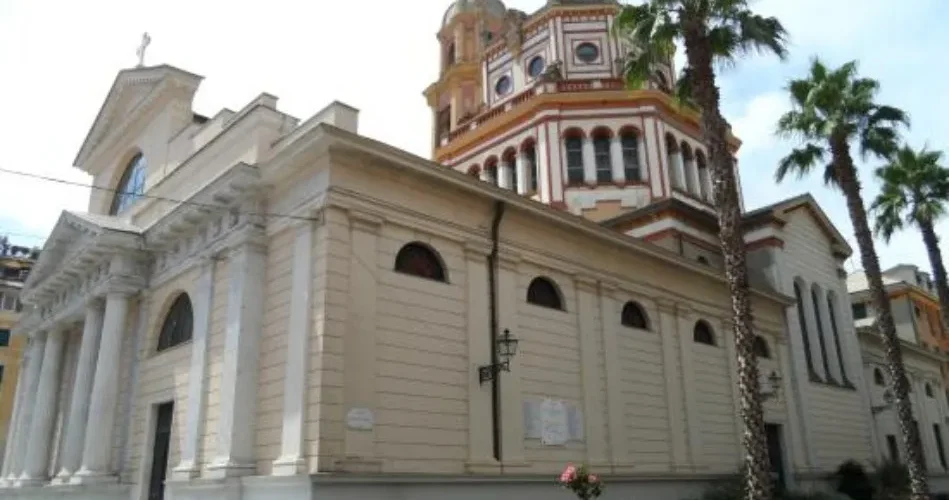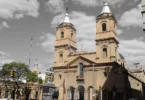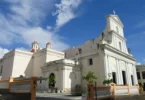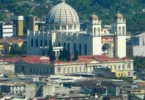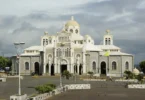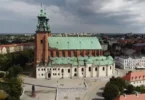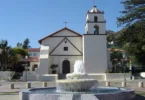Introduction
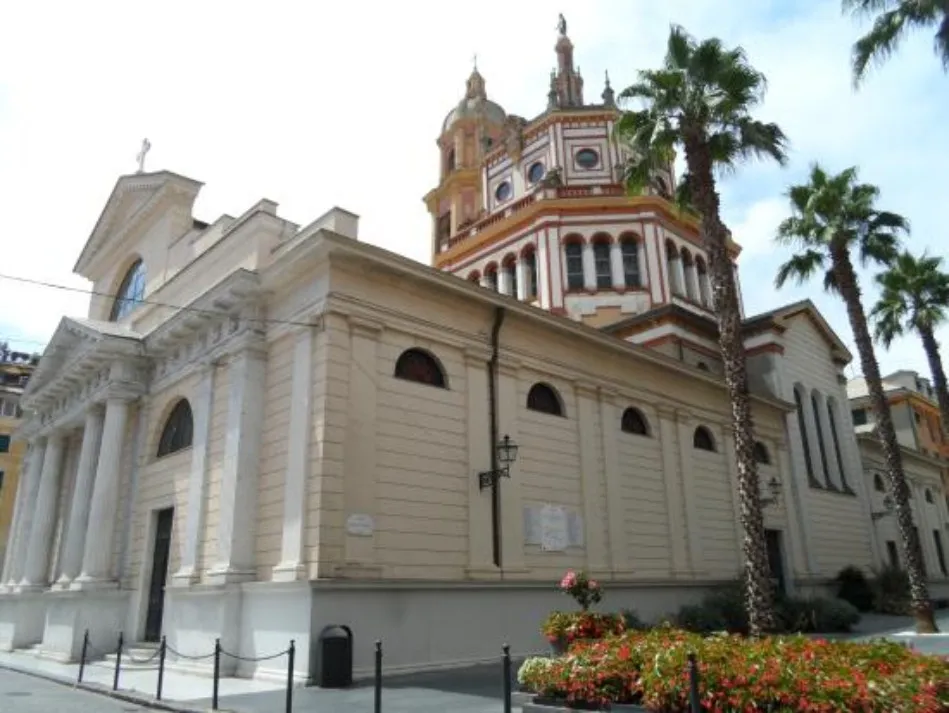
The Archipresbyteral-Collegiate Basilica of Saints Gervasio and Protasio is a prominent Catholic place of worship situated in the town of Rapallo, within the metropolitan city of Genoa, Italy. The basilica is positioned between Corso Italia and Piazza Matteo Canessa, serving as the central church of the parish of Saints Gervasio and Protasio. This parish is part of the vicariate of Rapallo-Santa Margherita Ligure within the Diocese of Chiavari. Established as a place of significant religious importance, the basilica has been a center of faith for centuries. In recognition of its historical and spiritual significance, Pope Pius XI elevated the church to the status of a minor basilica in May 1925. This designation was a mark of distinction, acknowledging the basilica’s role in the local Catholic community and its contributions to the broader ecclesiastical traditions. The parish community served by the basilica is one of the largest and most influential in the diocesan area, providing spiritual guidance, religious services, and community support to the faithful in the region. The basilica continues to be a central figure in the religious and cultural life of Rapallo and its surroundings.
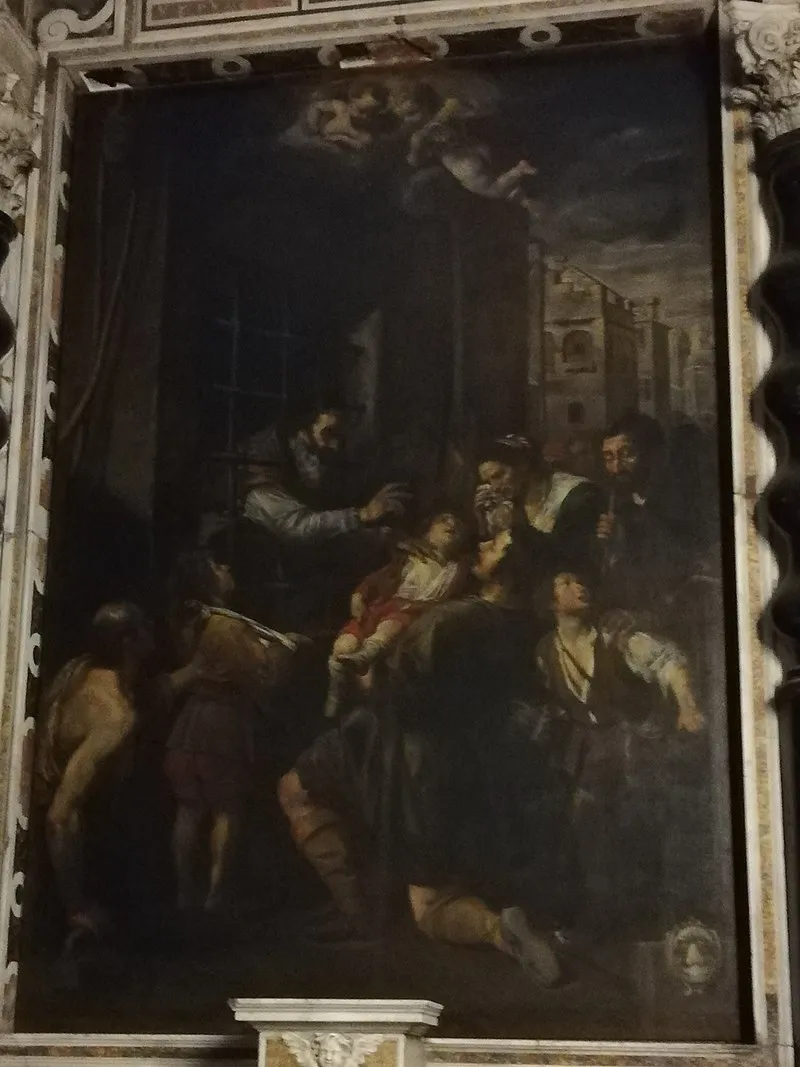
The Archipresbyteral-Collegiate Basilica of Saints Gervasio and Protasio has a rich history dating back to the early 12th century. The dedication of the church to Saints Gervasio and Protasio is traditionally believed to have occurred on 11 October 1118, a date confirmed by some historical records and papal sources. Pope Gelasius II is said to have officiated the dedication while on his way to France. However, there is some scholarly debate about the exact date, as certain historical records, particularly a marble plaque commemorating the event, present discrepancies. These Roman characters were later interpreted in various ways, and several studies by scholars from the University of Genoa and the Superintendence of Artistic and Cultural Heritage of Liguria suggested that the date of the basilica’s consecration may have been adapted to align with the consecration of San Lorenzo Cathedral in Genoa, which took place on 10 October 1118 by the same pope.
The presence of a Chapter of Canons at the basilica is recorded as early as 1143, indicating the church’s importance as a center of religious life. Over the centuries, the basilica has undergone various changes due to attacks, looting, and natural disasters, particularly due to its strategic location in the Rapallo seaside village. In its early years, the basilica’s jurisdiction extended over 17 churches, from Portofino to San Pietro di Rovereto (Zoagli) and through the middle Fontanabuona valley (Cicagna), underscoring its significance in the region’s spiritual and social life. The basilica also served as a location for important local gatherings where decisions were made regarding the political, religious, and social life of the Rapallo community.
Restoration and Alterations
In 1604, a papal bull issued by Cardinal Orazio Spinola, the Archbishop of Genoa, highlighted the urgent need for repairs to the basilica, as it had fallen into a state of disrepair. Restoration efforts began in 1606 with the relocation of the choir to the entrance and the repositioning of the main altar. After 12 years of work, the restoration was completed on 2 June 1628, with the structure maintaining its four-nave layout. Subsequent alterations continued throughout the years. In 1679, the basilica underwent modifications to build a new apse, erasing much of the Gothic-Romanesque architectural style in favor of a more modern 18th-century appearance. In 1721, the choir was extended with the addition of spiral columns with walnut capitals. A wooden crucifix was donated in 1725 and later transferred to the nearby San Quirico d’Assereto church.
Flooding and Reconstruction
The basilica suffered significant damage on 14 October 1794 when the Boate torrent flooded the church, devastating its religious furnishings. Further floods occurred during the 19th and 20th centuries, causing more damage. Despite these setbacks, restoration continued, with significant works carried out in the second half of the 19th century. Between 1852 and 1856, architect Gio Batta Olivieri undertook a renovation of the basilica, which included the design of a new neoclassical façade. A more substantial reconstruction project began in the early 20th century under the direction of the new archpriest, Monsignor Cesare Boccoleri, who would later become the bishop of Terni and then Modena. Architect Gaetano Moretti was tasked with the unification of the ancient structure with modern elements. The project culminated in the construction of a monumental dome, which was completed in 1920, despite the challenges posed by World War I. The new basilica was solemnly consecrated on 1 July 1920.
Damage During World War II
During the Second World War, the basilica, like many other buildings in Rapallo, was heavily affected by an Allied air raid on 28 July 1944. The raid caused casualties inside the church and led to the collapse of the right nave. As a result, the basilica was closed to religious worship for nearly three years until it was reopened on 29 March 1947 after extensive restoration work.
Recent Restorations
In the years following World War II, further restoration efforts took place. Notably, the side square of the basilica was pedestrianized and reconstructed in 2006, creating a new churchyard. In 2009, the neoclassical façade underwent a renewed decoration to preserve its grandeur. These modern improvements have ensured that the basilica remains an important and well-maintained religious and historical landmark in the Rapallo area.
Architecture of Basilica of St. Gervasius and St. Protasius, Rapallo, Italy
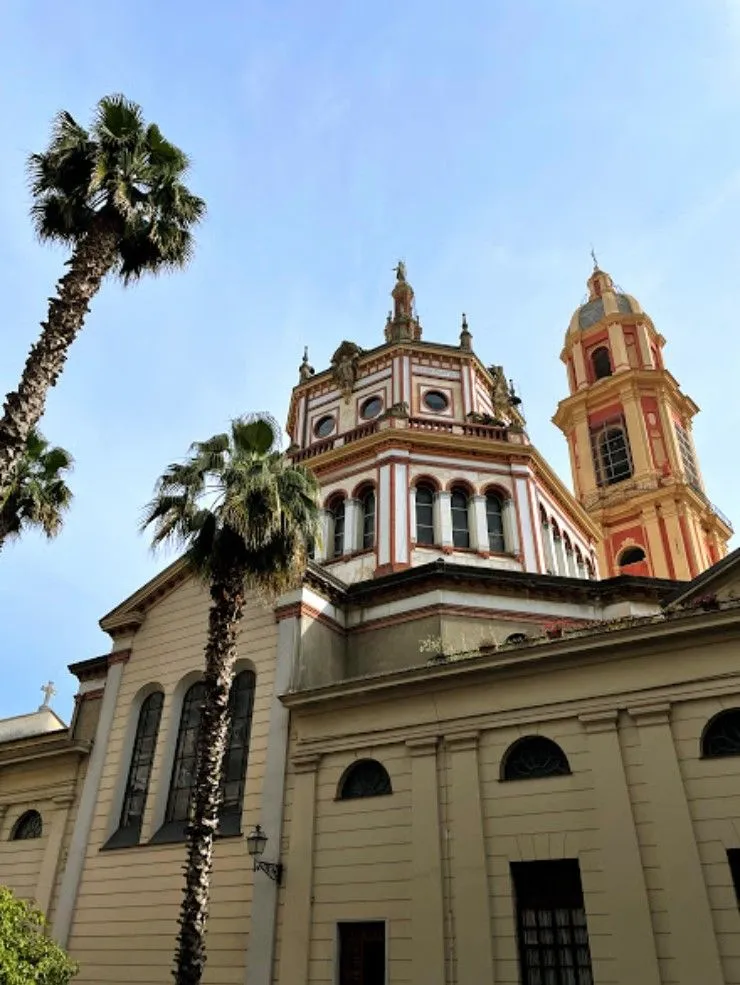
Architectural Style: Neoclassical Architecture
The Basilica of Montallegro, a monumental church with a rich history, was originally built in the 1920s. It has undergone multiple phases of renovation and improvement over the centuries. The church, with its towering dome and leaning bell tower, has become an iconic landmark in Rapallo.
The Facade
The exterior of the basilica showcases a blend of classical and modern architectural styles, with a notable feature being the facade. Between the main door and under the tympanum, there is a small trapezoidal stone that dates back to 1606, after the first significant renovation of the basilica. This stone bears a Latin inscription that has been translated as follows:
“In the year 56 of Caesar Augustus and 14 from the birth of Our Lord, on the eighth day of the Ides of August, this temple was dedicated to the pagan gods, as is shown by the inscription of admirable antiquity, transferred to this upper part of the entrance that existed where the choir now is by order of the Administrators of the Church Messrs. Agostino Cagnone, Nicola Chichizola, Carlo Lencisa, Battista Giudice in the year 1606, on October 16th.”
Historians believe that this inscription confirms the tradition that the religious site was built on the remains of an ancient pagan temple, further solidifying the basilica’s historical significance.
The Bronze Portals
The bronze portal at the main entrance of the basilica is a striking feature. It depicts the apparition of Our Lady of Montallegro to Giovanni Chichizola, a peasant from Rapallo, on July 2, 1557. The portal was crafted by the sculptor Arrigo Minerbi in 1957, with the collaboration of Piero Brolis. The other bronze side doors were created by Guglielmo Salvini, each representing different saints: Saint Lucia, Saint Rosalia, and Saints Gervasio and Protasio.
The Dome
The dome of the basilica stands as one of its most imposing features. The construction of the octagonal dome began on January 1, 1914, during a New Year’s celebration. The project was a collaboration between the Rapallo administration and the curia, with financial support from the local community. Milanese architect Gaetano Moretti designed the dome, and the construction costs were estimated at over 30,000 lire, with 5,000 lire donated by the people of Rapallo. After six years of construction, the dome was completed in 1920 and was formally donated to the citizens. On June 1, 1931, a bronze statue of the Madonna of Montallegro was placed atop the dome, adding a symbolic finishing touch to the basilica’s design.
The Leaning Bell Tower
The bell tower, which stands next to the basilica, has been a subject of ongoing architectural challenges. The tower has undergone several demolitions, reconstructions, and additions throughout history, particularly due to stability issues related to its sloping structure. The bell tower’s troubles began in 1749 when a committee was appointed to redesign and renovate the tower, which was then situated to the right of the church. However, work was halted due to fears of collapse caused by the added weight and a slope exacerbated by flooding in the marshy area surrounding the church. After further attempts at stabilization, the decision was made to demolish the original tower in 1753.
The new bell tower was constructed next to the apse in a more stable location, but due to a miscalculation in the foundations, the tower continued to lean. The slope increased over time, leading to another proposal in 1768 to gradually raise the tower to a height of 67 meters, making it the tallest bell tower in Liguria. Despite further attempts in the late 19th century to stabilize the tower, including efforts in 1880 to straighten the structure, the tower still leans to this day. The bell tower houses 12 bells, including a tympanum for the hourly strike. The bells were cast in various stages by Roberto Mazzola, with the largest bell having a medium light shape due to space constraints within the tower. The bells are tuned to a diatonic scale, with the lowest note being A2 flat.
The Interiors of the Basilica of Montallegro
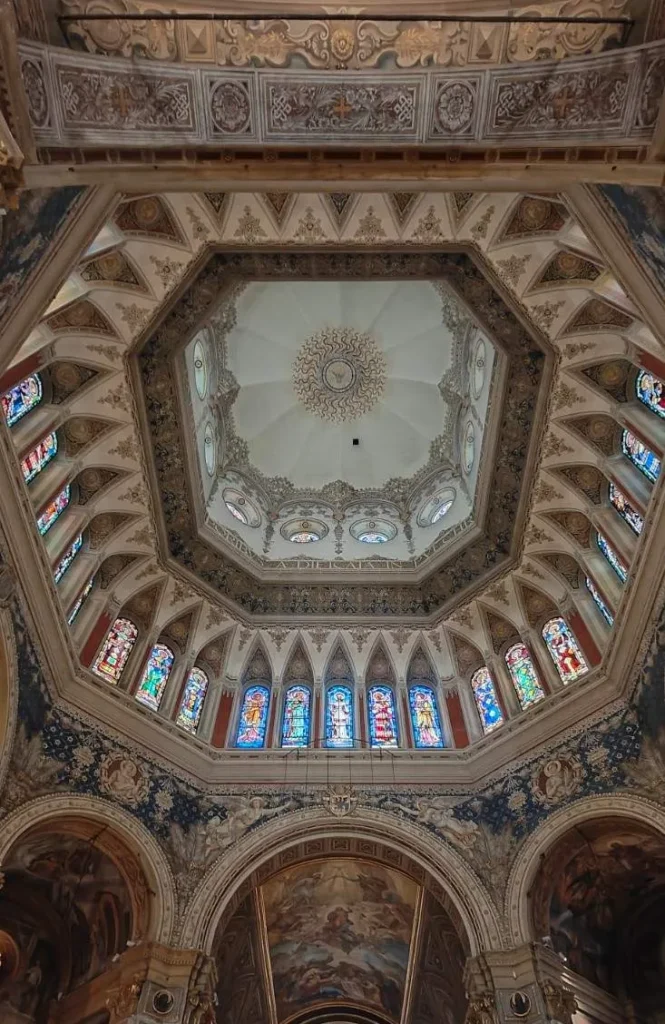
The interior of the Basilica of Montallegro is a remarkable blend of historical and artistic elements, showcasing a rich collection of altars, paintings, sculptures, and decorative features that span several centuries.
Right Aisle
In the right aisle, which was rebuilt after the air raid of July 28, 1944, the baptistery features a 17th-century marble basin and a sculpted representation of the Baptism of Jesus by St. John the Baptist, created by Rapallo sculptor Italo Primi. The next side altar is dedicated to the Crucifix, displaying two wooden statues of St. Francis of Assisi and St. Clare, positioned in 1961, along with an ancient wooden image. Two plaques in this niche commemorate Canon Silvio Camogli, who died in the 1944 bombing, and Don Chute, an English priest and friend of the writer Ezra Pound, who financed the restoration of the altar. As one continues towards the main altar, the two subsequent side altars hold a painting of St. John Bosco by Mattia Traverso, blessed in 1948 by Cardinal Eugène Tisserant to honor the Salesian Order’s presence in Rapallo, and an altarpiece of St. Antonio Maria Gianelli by Nicola Neonato, painted in 1950. The aisle concludes with the aedicule of St. Anthony of Padua.
Left Aisle
Entering from the main door, the first altar is dedicated to Saint Lucia. This altar holds a painting dated around 1600, attributed to Giovanni Andrea De Ferrari, depicting Saint Lucia between Saints Erasmus, Anthony the Abbot, John the Evangelist, and Catherine of Alexandria, with a coastal background. Additionally, a wooden group of Our Lady of Montallegro, sculpted by Gardenie Stuflesser, is positioned here. The next altar, sculpted in 1693 by Gio Bernardo Garvo, preserves a 17th-century canvas of the Madonna del Rosario and two marble statues of St. Dominic and St. Rose, created by Francesco Baratta. The aisle ends with the altar of Our Lady of Sorrows (Addolorata), which houses a painting by Luca Cambiaso, depicting the Deposition, and an image of St. Rita of Cascia. The shrine of Our Lady of Lourdes is also present, containing ancient reliquaries.
Central Nave and Apse Area
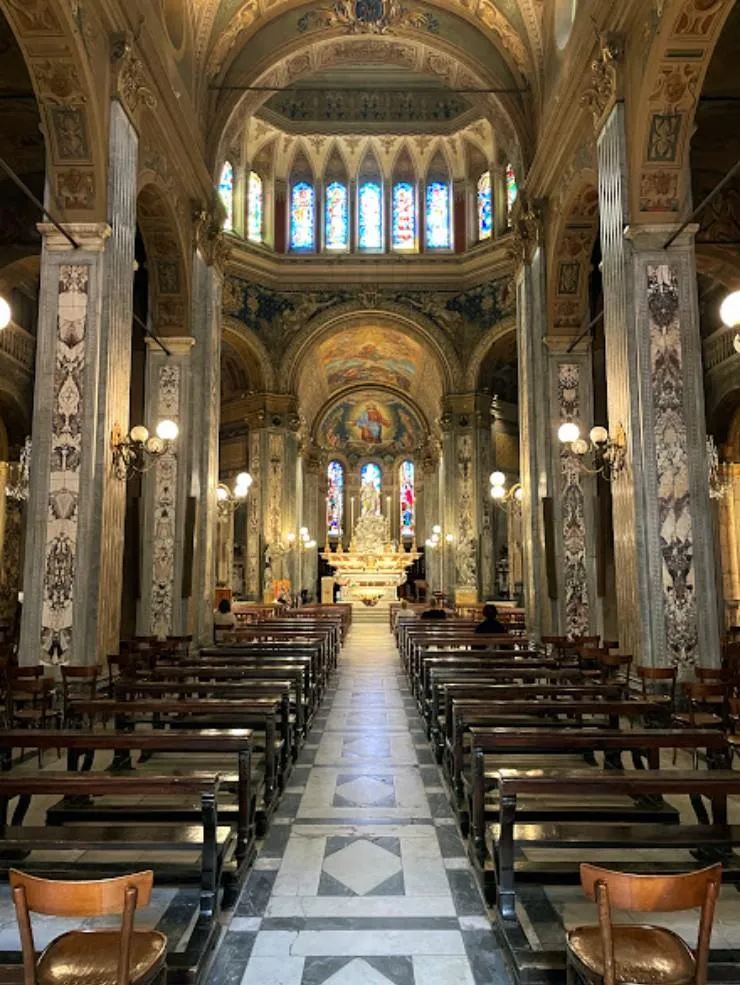
Frescoes and Decoration
The frescoes in the central nave date back to the 1854 pictorial decoration by Vicenza painter Agostino Bottazzi, enhanced by the colorful light coming from the stained glass windows on the façade, created by artist Rolando Monti in 1960. The internal part of the dome, octagonal in shape, is adorned with Art Nouveau frescoes by Archimede Albertazzi, painted between 1918 and 1920. During this period, 42 polychrome stained glass windows were also installed, depicting a choir of angels. Below the dome, four marble statues of the Evangelists—St. Mark, St. Luke, St. John, and St. Matthew—were placed near the pillars on February 4, 1932, and blessed by Monsignor Amedeo Casabona, Bishop of Chiavari. These statues were originally purchased for the Church of San Michele Arcangelo in San Michele di Pagana and later transferred to the basilica.
The Marble Pulpit
The marble pulpit, leaning against a pillar in the right nave, was created by craftsman Lorenzo Riddi in 1637, following a collection of funds and offerings from the local population. The six bas-reliefs on the pulpit depict scenes from the Passion of Jesus and the titular saints of the church. According to historian Gio Agostino Molfino, these bas-reliefs may have originally come from a chapel built by Cardinal Ottobono Fieschi, later Pope Adrian V, who had familial connections to Rapallo.
Transept and Side Altars
In the transept, there is the altar dedicated to the Santissimo (Most Holy Sacrament), designed by Gaetano Moretti as part of the last major renovation of the basilica. The altar is decorated with a fresco of the Apparition of Montallegro by Archimede Albertazzi and polychrome stained glass windows by Olindo Grassi. Opposite it is the altar of St. Joseph, featuring a polychrome marble altar by Antonio Rovelli, created in 1921, along with busts of benefactors Angelo Castagneto and Maria Vaccaro Castagneto. The subsequent side altars—St. Biagio (on the right) and the Annunciation (on the left)—house paintings by Domenico Fiasella. One of the works, the “Miracle of the Throat” of St. Biagio, illustrates the healing miracle that took place when the saint, imprisoned behind bars, touched a child’s throat and healed him from a fishbone lodged in his throat.
The Presbytery
In the presbytery, the large marble altar by sculptor Bernardo Schiaffino was originally commissioned on June 1, 1728, for the local monastery of Santa Chiara da Montefalco. After the monastery was suppressed, the altar was moved to the basilica in 1919. In the center of the altar stands a large marble group depicting the Apparition of Our Lady of Montallegro to the peasant Giovanni Chichizola, sculpted by Enrico Quattrini and blessed on September 12, 1926. On the left side of the altar, there is a new bronze liturgical altar made by Giorgio Gnudi in 1992.
In the apse, a large fresco of Christ Pantocrator, surrounded by Saints Gervasius and Protasius, was created in 1925 by Archimede Albertazzi. The vault features a fresco of the Assumption of Mary, painted in 1938 by Pasquale Arzuffi. The walls of the presbytery feature additional paintings, including depictions of Santa Rosalia (a gift from Gervasio Pescia in 1679), the Madonna del Rosario by Domenico Piola, scenes from the lives of Saints Gervasius and Protasius by Santino Fortunato Tagliafico (1890), and the Flight into Egypt and the Visit of Saint Elizabeth, both 20th-century works.
The Stations of the Cross
The fourteen stations of the Via Crucis, created in 1943 by Venetian artist Oreste Zampieri, were originally not placed inside the church and were therefore spared during the 1944 aerial bombing. They were finally installed in the basilica in June 1948.
Feast Day
Feast Day : 19 June
The feast day of St. Gervasius and St. Protasius, the patron saints of Rapallo and the Basilica of St. Gervasius and St. Protasius, is celebrated on June 19th each year. This day honors the martyrdom and memory of the two saints, who were early Christian martyrs in Milan during the reign of Emperor Nero. The basilica is a significant religious and historical site in Rapallo, dedicated to these saints.
Church Mass Timing
Monday : 7:00 AM., 8:30 AM., 10:30 AM., 6:00 PM.
Tuesday : 7:00 AM., 8:30 AM., 10:30 AM., 6:00 PM.
Wednesday : 7:00 AM., 8:30 AM., 10:30 AM., 6:00 PM.
Thursday : 7:00 AM., 8:30 AM., 10:30 AM., 6:00 PM.
Friday : 7:00 AM., 8:30 AM., 10:30 AM., 6:00 PM.
Saturday : 7:00 AM., 8:30 AM., 10:30 AM., 6:00 PM.
Sunday : 7:00 AM., 9:00 AM., 10:30 AM., 12:00 PM., 6:00 PM.
Church Opening Time:
Monday : 9:00 am – 12:00 pm.
Tuesday : 9:00 am – 12:00 pm.
Wednesday : 9:00 am – 12:00 pm.
Thursday : 9:00 am – 12:00 pm.
Friday : 9:00 am – 12:00 pm.
Saturday : 9:00 am – 12:00 pm.
Sunday : 9:00 am – 12:00 pm.
Contact Info
Address :
Piazza Cavour, 23, 16035 Rapallo GE, Italy.
Phone : +39 0185 52375
Accommodations
Connectivities
Airway
Basilica of St. Gervasius and St. Protasius, Rapallo, Italy, to Elisuperficie Rossetti, Via Passalacqua, Airport distance between 11 min (4.6 km) via Via Santa Maria del Campo.
Railway
Basilica of St. Gervasius and St. Protasius, Rapallo, Italy, to Rapallo 16035, Rapallo GE, Italy, distance between 1 min (160.0 m) via SS 1.

